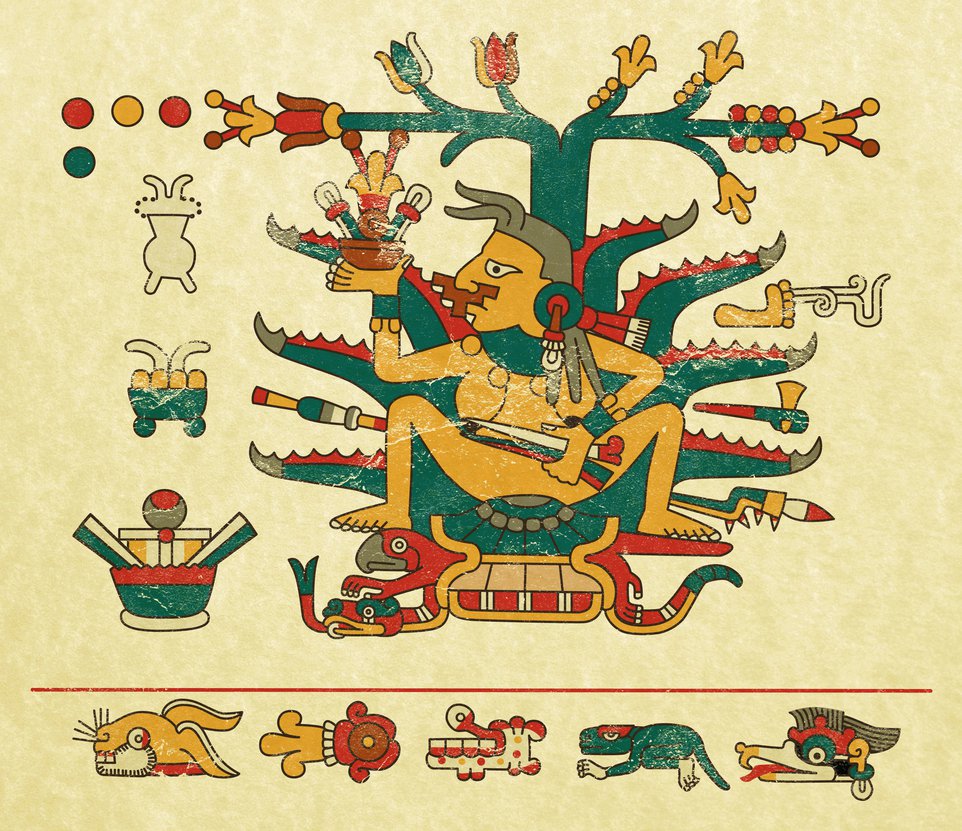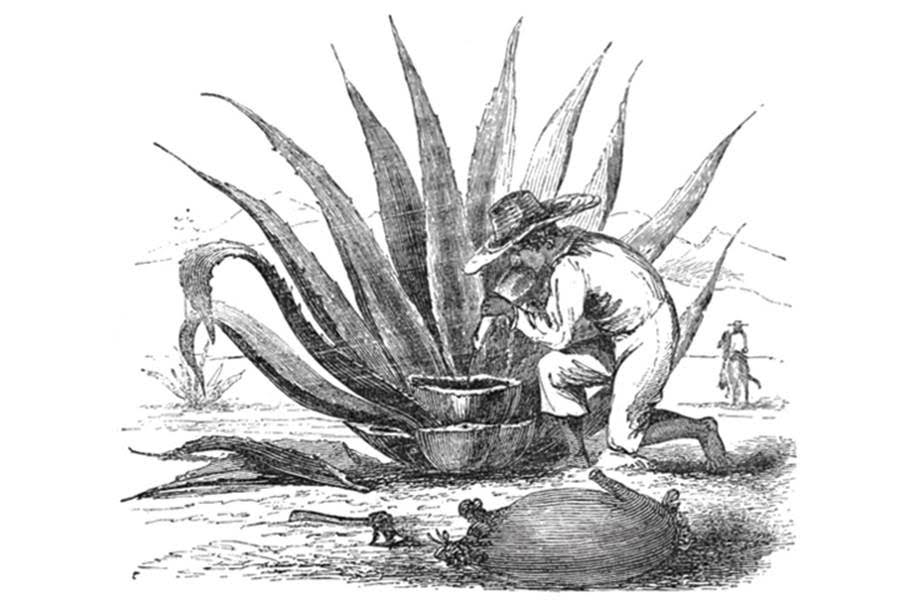History of Agave
A BRIEF ORIGIN of Agave Spirits


There are multiple theories regarding the origin of agave distillation. Although there is little evidence, some researchers have found signs of Pre-Hispanic (before Spanish invasion) distillation in Mexico amongst the Olmecs and Aztecs, as well as Filipino-influenced practices dating as far back as the early 1500s. However, the most popular theory still attributes the Spanish as the first (or at least most influential) to bring the method to the New World.
Long before the Spanish arrived in Mexico, the agave was considered a sacred plant and held a major role in the people’s religion. The personification of the plant, Mayahuel, is the Aztec goddess of fertility and nourishment. Mayahuel (pictured to the right) was considered the mother of the 400 rabbits, the Aztec gods of intoxication. Separately, historians tell us that in Greek mythology- Agave was the goddess of desire who was a follower of Dionysus, the father of bacchanals and profound inebriation.
Dating back 1000 years B.C., pulque is considered to be the first intoxicating beverage to be produced from the agave plant. It was made by fermenting the sap from certain agave varietals which produces a milky and viscous drink, and was also a part of many religious rituals. While the timing of its origin is up for debate- Mezcal is widely accepted as the first distilled spirit produced from the plant, and remains the colloquial term for any distilled spirit from agave in Mexico. Researchers claim stills dating back to the 1500s have been identified in several areas of southern Mexico.
Continued exploration throughout the country led to the spread of the distillation process. As the Spanish explored Mexico to the north, they discovered the area now known as the State of Jalisco. Here they encountered a native tribe known as the “Tiquili” with their village named Tequitlan, meaning “land of hard labor.” The Spanish later shortened this to “Tequila.” It is here that the process of baking the piña was moved above ground into an oven.
Throughout the world there are slight variations in agave selection, fermentation and distillation resulting in a wide range of spirits. Some examples include Raicilla – which is made along the coast near Puerto Vallarta, Bacanora which is distilled from the wild agave pacifica- found only in the mountain ranges of Sonora, and agave spirits from India and South Africa- all with their own unique process & profile.
A Brief Timeline of Agave
Studies have found that first the Olmecs, followed by the Aztecs, created a fermented drink from the agave plant known as “pulque.”
Researchers have confirmed evidence of Pre-Hispanic distilling of the agave plant (mezcal) in Mexico by this time.
Spanish conquistadors arrive in Mexico and introduce their techniques of distillation to North America.
The Spanish build a rudimentary mud still known as an alquitarra, which produces some of the first documented mezcals.
José Cuervo becomes the first officially licensed manufacturer of mezcal de Tequila.
Tequila is successfully aged in wood for the first time.
Mexico wins independence from Spain, making Spanish products harder to come by and opening the door for mezcal de Tequila to rise in popularity.
Mezcal producers begin baking agave in above-ground ovens, as opposed to earthen pits.
Mexico grants several of its largest mezcal producers permission to call their product “tequila,” after the town of Tequila in Jalisco state. Blue agave becomes the primary agave variety used for making tequila
The first barrels of tequila are shipped to the United States and Europe.
The blue agave is renamed the agave “tequilana Weber azul” after the naturalist who classified the plant in 1896.
The margarita is created. While different origin stories exist on how this ‘daisy’ of a drink was created (bartender Carlos (Danny) Herrera and Marjorie King, bartender Henry Madden, Rita Hayworth, or simply the evolution of the Daisy cocktail), it has gained tremendous popularity since- especially in the U.S.
The United States recognizes tequila as a distinct product from Mexico and restricts the sale of products sold as tequila to those made only in Mexico. Mexico returns the favor by doing the same for bourbon.
The Mexican Government issues its Declaration for the Protection of the Appellation of Origin Tequila.
The Mexican Government issues its Declaration for the Protection of the Appellation of Origin for Mezcal
The European Union recognizes Mexico as the sole producer of tequila. Today there are nearly 1,000 brands of tequila available, approximately 110 tequila producing companies, and about 50-60 distilleries. At least 70 brands of mezcal have also been exported to the U.S.
The Mexican Government issues its Declaration for the Protection of the Appellation of Origin for Bacanora.
The Mexican Government issues its Declaration for the Protection of the Appellation of Origin for Sotol.
NOM 070 is passed defining 3 classes of mezcal across the 9 approved states in Mexico- Mezcal, Artisanal Mezcal, Ancestral Mezcal.
